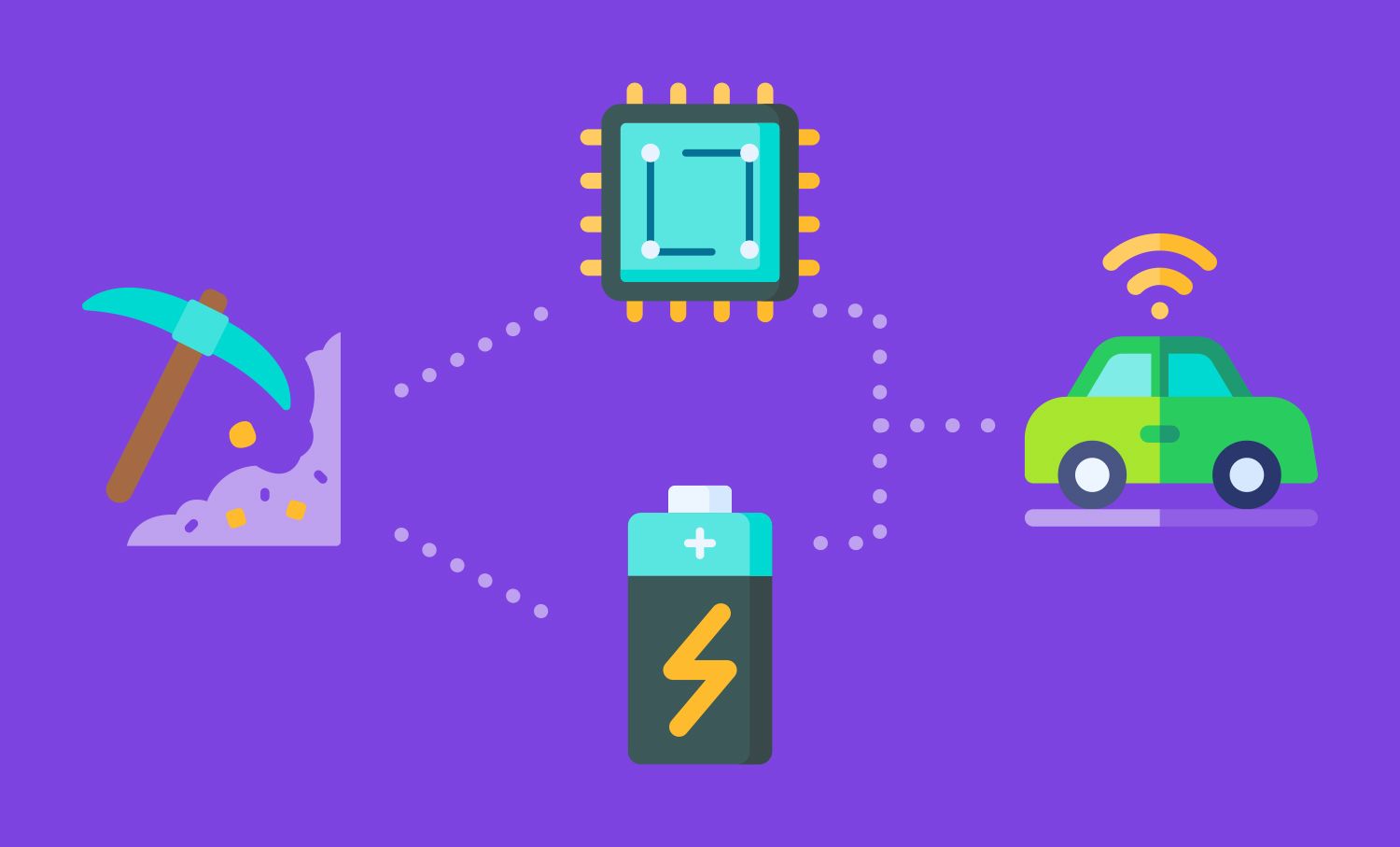Resource Criticality for a Clean Technological Future
Resource Criticality for a Clean Technological Future. The use of Rare Earth Elements (REEs) and Energy Critical Elements (ECEs) in green technology is critical.

The use of Rare Earth Elements (REEs) and Energy Critical Elements (ECEs) in green technology is critical
Resource criticality deals with the importance and abundance of a resource. The availability of a material has an impact on the deployment of any technology that relies on that material for development. Resources such as rare earth elements are considered critical for the development of many modern day technologies. These elements can be mined as a primary product or a by-product depending on their concentration and abundance, they are found and mined from within the earths crust.
Rare earth elements are split into two categories:
· Heavy Rare Earth Elements (HREEs)
· Light Rare Earth Elements (LREEs)
Due to their unusual physical and chemical properties, such as unique magnetic and optical properties, these REEs have diverse applications that touch many aspects of modern life and culture. Both ‘heavy’ and ‘light’ REEs are primarily found in China, between 85 – 95% of all rare earth elements are mined in China. This monopolisation of production is a global concern for many businesses when it comes to their supply chain.
For example, Cerium, a rare earth element in the lanthanide group, is overwhelmingly produced in China (96%). Yttrium is a rare earth element not in the lanthanide group, it is a HREE (heavy rare earth element). Yttrium and HREE production is even more dominated by Chinese production than LREEs (light rare earth elements) with 99% of yttrium originating in China.
Other elements such as Ytterbium and Erbium, both belonging to the HREE group, are also almost exclusively produced in China. Projects are planned for mining of rare earth elements in regions such as Australia, Canada, the USA and Greenland. It is only when these projects come to fruition that the monopolisation of REE’s can be decreased and the supply chains can become more robust. This stability of supply is important, as countries around the world commit to a greener future.
Clean energy technologies, such as large wind turbines and electric vehicles, use rare-earth permanent magnets (meaning permanently magnetised) that usually contain four REEs:
· praseodymium,
· neodymium,
· samarium, and
· dysprosium.
Specific REEs are used individually or in combination to make phosphors—substances that emit luminescence—for many types of ray tubes and flat panel displays, in screens that range in size from smart phone displays to stadium scoreboards. Some REEs are also used in fluorescent and LED lighting.
Yttrium, europium, and terbium phosphors are the red-green-blue phosphors used in many light bulbs, panels, and televisions. Furthermore, the glass industry is the largest consumer of REE raw materials, using them for glass polishing and as additives that provide colour and special optical properties. Another element, lanthanum makes up as much as 50 percent of digital camera lenses, including phone cameras.
Another resource necessary to build and maintain a green technological transform comes in the form of Energy Critical Elements (ECEs). The supply of these elements is critical in meeting new sustainable technology solutions.
One example of an ECE is Platinum. However, it is rarely produced as a main economic mining product. The largest source of platinum (nearly 77%) is the Bushveld complex in South Africa. Platinum is the main economic mining product from South Africa. Russia (14%) and Zimbabwe (5%) are also minor producers of platinum. Again the monopolisation of this product is a concern for global demand and supply. Platinum is used as an electrocatalyst in low temperature fuel cells such as PEMFCs (Polymer Electrolyte Membrane Fuel Cells.)
Dysprosium is an energy critical element which is used in very small amounts. If the generator of a wind turbine is a modern medium or high speed permanent magnet design, dysprosium is added in small amounts to neodymium-based permanent magnets. It increases their service temperature limit. Like many other rare earth elements, the supply of nearly all dysprosium (99%) currently originates in China. There are projects planned in Greenland (Denmark) and Canada to mine dysprosium.
The non-metal tellurium (Te) is used in Cadmium Telluride (CdTe) PV modules. It is a lower cost replacement for silicone in photovoltaic cells. This could ensure that solar is seen as a competitive option in the energy market, however, it all relies on the consistent supply of Te. Several options for Te supply have been identified globally, this includes sources of Te as a primary ore or as a by-product from refining copper, gold, lead and zinc. To ensure that solar CdTe works in solar PV the supply and demand of Te must remain at sustainable levels.
Green energy solutions are often referred to as renewable sources of energy as they are not finite like their counterparts such as coal, gas and oil. They cannot be used up as the sources of renewables such as wind and sun will never run out.
However, there are elements used in renewable technologies such as REEs and ECEs that can be used up. This resource criticality as well as the monopolisation of these resources is an issue that should be addressed to ensure a green future is a truly sustainable one.
Sources: